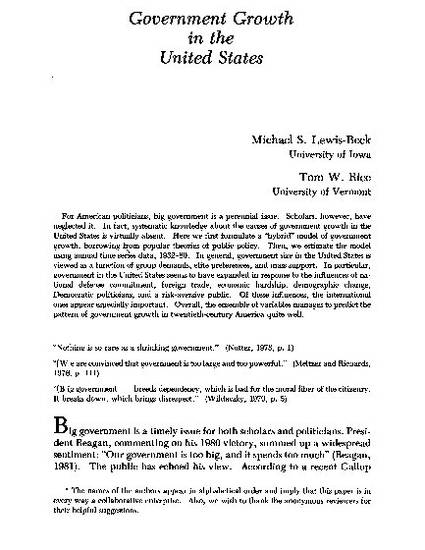
For American politicians, big government is a perennial issue. Scholars, however, have neglected it. In fact, systematic knowledge about the causes of government growth in the United States is virtually absent. Here we first formulate a "hybrid" model of government growth, borrowing from popular theories of public policy. Then, we estimate the model using annual time series data, 1932-80. In general, government size in the United States is viewed as a function of group demands, elite preferences, and mass support. In particular, government in the United States seems to have expanded in response to the influences of national defense commitment, foreign trade, economic hardship, demographic change, Democratic politicians, and a risk-aversive public. Of these influences, the international ones appear especially important. Overall, the ensemble of variables manages to predict the pattern of government growth in twentieth-century America quite well.
Available at: http://works.bepress.com/michael_lewis_beck/143/
